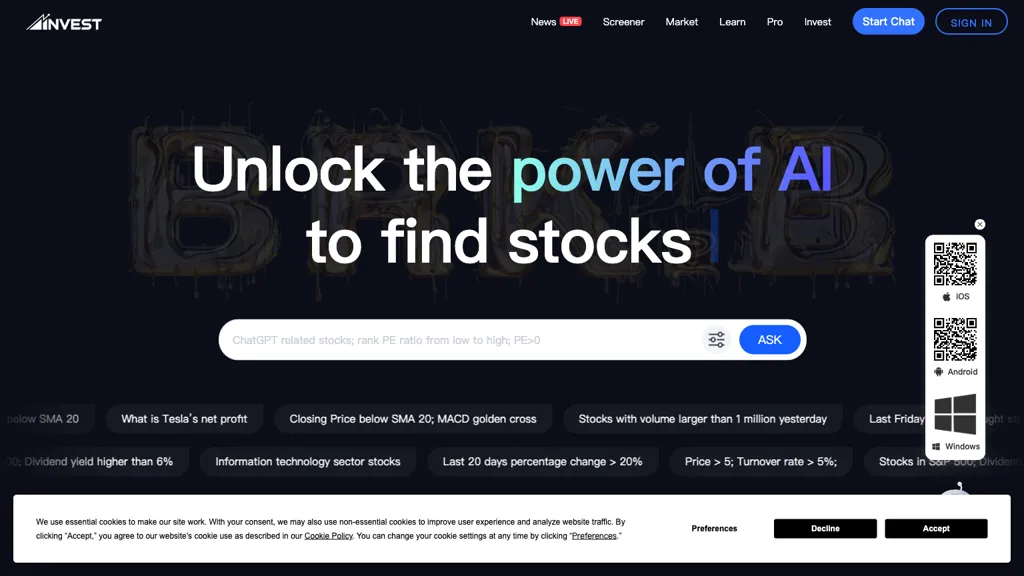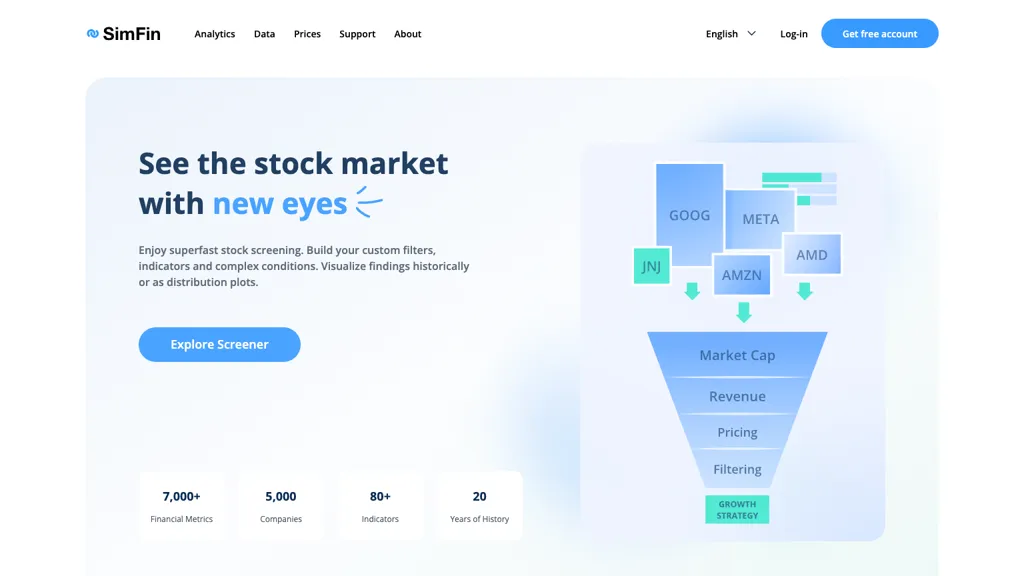The AI and machine (ML) model employed by stock trading platforms as well as prediction platforms need to be evaluated to ensure that the data they provide are precise trustworthy, useful, and practical. Models that are poorly constructed or hyped up could lead to inaccurate predictions, as well as financial losses. Here are our top 10 tips on how to evaluate AI/ML-based platforms.
1. Know the reason behind the model as well as the method of implementation
Clarity of objective: Decide if this model is intended for trading in the short term or long-term investment, risk analysis, sentiment analysis and more.
Algorithm disclosure: Determine if the platform discloses which algorithms it is using (e.g. neural networks or reinforcement learning).
Customizability - Determine whether you can modify the model to meet your investment strategy and risk tolerance.
2. Evaluation of Performance Metrics for Models
Accuracy - Check the model's accuracy of prediction. However, don't solely rely on this metric. It may be inaccurate regarding financial markets.
Recall and precision: Determine how well the model identifies true positives (e.g. accurately forecasted price changes) and reduces false positives.
Results adjusted for risk: Examine the impact of model predictions on profitable trading in the face of the accounting risk (e.g. Sharpe, Sortino etc.).
3. Check the model's performance by backtesting it
Performance historical Test the model using previous data and determine how it will perform in previous market conditions.
Tests using data that was not previously used for training: To avoid overfitting, test the model using data that has not been previously used.
Scenario-based analysis: This involves testing the accuracy of the model in various market conditions.
4. Make sure you check for overfitting
Overfitting signs: Look for overfitted models. They are the models that do extremely well on training data and poor on data that is not observed.
Regularization techniques: Find out whether the platform is using methods like normalization of L1/L2 or dropout to prevent overfitting.
Cross-validation: Make sure that the platform is using cross-validation to test the model's generalizability.
5. Assess Feature Engineering
Relevant features: Verify that the model has important features (e.g. price volumes, technical indicators and volume).
Features selected: Select only those features that have statistical significance. Do not select redundant or irrelevant information.
Dynamic feature updates: Find out whether the model is able to adapt to changes in market conditions or the introduction of new features in time.
6. Evaluate Model Explainability
Interpretation - Make sure the model gives the explanations (e.g. values of SHAP and the importance of features) for its predictions.
Black-box models: Beware of platforms that use overly complex models (e.g., deep neural networks) without explanation tools.
User-friendly insights: Make sure that the platform provides actionable insights in a format that traders can understand and use.
7. Assess the Model Adaptability
Market changes: Determine whether the model can adjust to changing market conditions, like economic shifts or black swans.
Continuous learning: Determine if the platform continuously updates the model to incorporate new information. This can boost performance.
Feedback loops: Ensure the platform is incorporating feedback from users or actual results to improve the model.
8. Look for Bias & Fairness
Data bias: Ensure the training data is representative of the market and free from biases (e.g., overrepresentation of particular segments or timeframes).
Model bias: Make sure the platform monitors the model biases and reduces them.
Fairness. Make sure your model doesn't unfairly favor certain industries, stocks or trading techniques.
9. Calculate Computational Efficient
Speed: Determine whether the model is able to generate predictions in real time or with minimal latency, especially for high-frequency trading.
Scalability - Verify that the platform can handle large datasets, multiple users, and does not affect performance.
Resource usage: Check whether the model is using computational resources effectively.
Review Transparency, Accountability and Other Problems
Documentation of the model: Ensure that the platform has comprehensive documentation about the model's architecture and training process.
Third-party validation: Find out whether the model was independently validated or audited a third person.
Make sure there are systems that can detect mistakes or failures in models.
Bonus Tips
User reviews and case studies User feedback is a great way to get a better understanding of how the model performs in real world situations.
Trial period - Try the demo or trial version for free to test the model and its predictions.
Support for customers - Make sure that the platform is able to provide a robust support service to solve problems related to model or technical issues.
Check these points to evaluate AI and ML models for stock prediction, ensuring that they are accurate and clear, and that they are compatible with trading goals. Follow the recommended ai investment app for more recommendations including incite, ai for investment, ai stock trading bot free, ai investment app, ai investing platform, ai for investing, ai investing platform, ai trading, best ai stock trading bot free, ai stock and more.

Top 10 Tips To Evaluate The Educational Resources Of Ai Stock-Predicting/Analyzing Trading Platforms
It is crucial for investors to review the educational tools offered by AI-driven trading and stock prediction platforms in order to understand how to utilize the platform effectively, interpret results and make informed decisions. Here are 10 tips to evaluate the value and quality of these tools.
1. Comprehensive Tutorials, Guides and Instructions
TIP: Check to see whether the platform has steps-by-step instructions and tutorials that are suitable for beginners as well as advanced users.
Why? Clear instructions are helpful for users to navigate the platform.
2. Webinars Videos, Webinars and Webinars
Find videos online, webinars and live training sessions.
Why is that visual and interactive content can make complex concepts easier for you to understand.
3. Glossary
TIP: Make sure that the platform offers a glossary with definitions and the most important terms in AI finance, AI, and various other fields.
The reason: This can help users, especially beginners to understand the terms that is used within the platform.
4. Case Studies and Real-World Examples
Tips - See whether the AI platform has case studies or real-world applications of AI models.
The reason: Examples of the capabilities of the platform and its applications are offered to help users understand the platform's capabilities.
5. Interactive Learning Tools
TIP: Search for interactive tools like simulators, quizzes, or sandboxes.
The reason: Interactive tools let users to practice and test their knowledge without risking real money.
6. Updated content
TIP: Make sure to check whether the educational materials reflect any modifications to the market, regulations or new features.
The reason: outdated information can result in confusion and make incorrect use of.
7. Community Forums with Support
Find active communities forums or support groups that allow members to share their thoughts and ideas.
Why: Peer-to-peer support and professional guidance can improve problem solving and learning.
8. Programs of Accreditation and Certification
Tip: Make sure the website you're considering has courses or certifications available.
What is the reason? Recognition of the learning process can encourage them to study more.
9. Accessibility and user-friendliness
TIP: Examine the accessibility and usability of educational resources (e.g., mobile friendly, downloadable pdfs).
The reason: Accessibility allows users to learn according to their own pace.
10. Feedback Mechanisms for Educational Materials
Tips - Make sure you can give your feedback to the platform on the educational materials.
What is the reason: Feedback from users helps enhance the quality and relevancy of the resources.
Bonus Tip: Different Learning Formats
Make sure the platform you choose to use is flexible enough to accommodate different learning styles (e.g. video, audio as well as text).
If you take the time to carefully analyze each of these factors, you will be able to determine whether the AI-powered stock prediction and trading system has powerful tools to educate you that can aid you to maximize its capabilities and make better trading decisions. Have a look at the recommended this post about ai investment tools for blog tips including ai trading tool, invest ai, ai stock trader, ai software stocks, ai stock analysis, best ai stock prediction, free ai tool for stock market india, ai software stocks, best ai stocks to buy now, ai in stock market and more.
